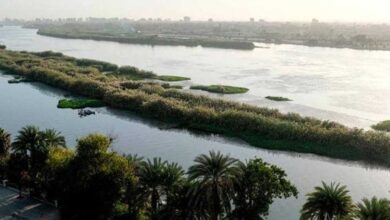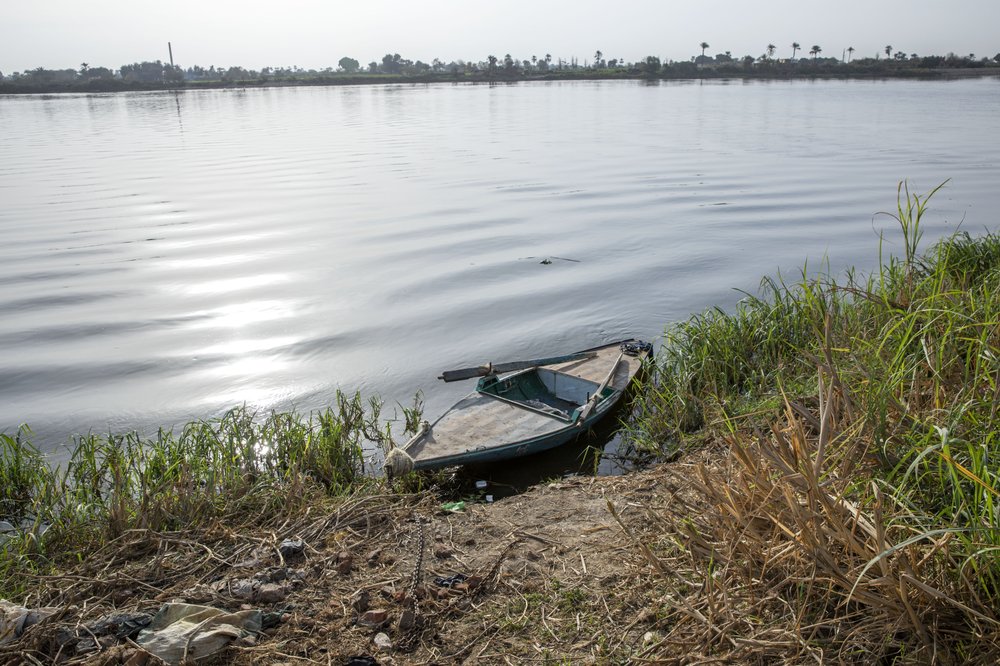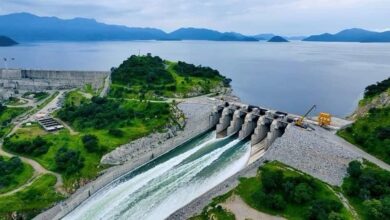Turning Herodotus’s epithet on its head, some have recently claimed that “the Nile is the gift of Egypt,” adducing historic rights to the Nile’s water. But what happens when the Nile’s water becomes an endangered resource?
In the past few decades, concerns about access to water have increased because of the Middle East’s scarcity of rain. This is not only the biggest threat to food security, as some experts highlight, but also a reason behind political conflict.
Driving forces behind the water crisis are excessive population growth, inefficiency in the way water is used, waste due to deficient irrigation technology, unlined canals that accelerate evaporation, and pollution.
Tina Jaskolski, research coordinator at the Desert Development Center (DDC) at the American University in Cairo (AUC), explains that Egypt’s conundrum stems from the fact that its only major water sources are the Nile — whose source is outside the country — and groundwater, which is finite.
Egypt signed two agreements pertaining to the utilization of the Nile’s water — one in 1929, during the colonial era, and the other in 1959 — with other African countries. The latter agreement guarantees Egypt and Sudan 55.5 and 18.5 billion cubic meters respectively of Nile water per year, even though Ethiopia contributes almost 85 percent of total Nile flow.
The treaties also stipulate that upstream countries cannot undertake any water projects, such as irrigation works or damns, without the approval of both Egypt and Sudan, the two downstream states.
The upstream countries not only contest the legality of colonial agreements but also complain that the 1959 treaty ignores their rights to water.
As Sharif S. Elmusa, political science professor at AUC, told Al-Masry Al-Youm, “Among the eleven riparian states, the Nile’s water is used primarily by Egypt and Sudan, for both irrigation, domestic consumption and generation of electricity, while the other countries’ use is related mainly to hydroelectric power.”
“The upstream countries,” Elmusa went on, “demand equal utilization among Nile Basin states, while Egypt as well as Sudan wants the maintenance of the current share based on historic use and the 1959 agreement.”
Even though Egypt and Sudan both rejected the Cooperative Framework agreement signed by the upstream countries in May 2010, Elmusa dismissed the possibility of a water war unless Egypt and Sudan decide to unite against Ethiopia, which is unlikely to happen. “Even though Sudan does not contribute much in terms of water to the Nile, it is becoming a key country because of its location, but it is necessary to understand how the new South Sudan will act because most likely it is going to support the upstream countries.”
According to Elmusa, the new Egyptian government has a lot of work ahead to manage better relations with the Nile-riparian states. Cooperation and increased diplomatic efforts to work together towards solutions are essential.
Looking for solutions
The Nubian Sandstone Aquifer runs between four countries, namely Libya, Sudan, Chad and Egypt. It provides fossil water, a non-renewable source that might run out in about 300 years, according to the government’s estimates.
This second source of water for Egypt sometimes leads to political disputes, when one of the four countries taps the aquifer in a way that affects the others.
The DDC is a non-profit research institution established in 1979 by AUC, focusing on the ecological, social and economic sustainability of communities in Egypt’s arid lands.
In 2006, the center started a program called Oasis Water Management in Abu Minqar, which is part of Farafra Oasis, in the Western Desert. The program tries to improve water-use efficiency around the Nubian Sandstone Aquifer.
Up to 40 percent of this fossil water is being wasted in farming operations each day. The reasons are mainly related to an inefficient drainage systems and geomorphology.
“In many oases you have huge lakes of drainage water accumulating that just sit there, evaporating in the sun. Also, water that is lost in desert farming does not, like in the case of the river Nile, return to the water source as underground water, but is actually lost to evaporation since the aquifer is located at a depth of around 1000 meters in Farafra, so water doesn’t go back to the aquifer,” Jaskolski explained.
The spirit of DDC is to work in partnership with local communities. Therefore, the team of experts has been trying to encourage more efficient water use by considering practices of existing communities and working with them on the construction of canals that allow them to carry on maintenance work themselves.
“Since 2006, we have lined two irrigation canals to speed up the water flow between the well and the field from four hours to just 15 minutes while significantly reducing water loss to seepage and evaporation. We have also installed drip and sprinkler irrigation trials, and have been experimenting with crop varieties that are more suitable for the desert,” Jaskolski said.
The philosophy behind the project is to “make the most out of the water you have,” avoiding the drilling of additional wells that will also tap into the finite water source. “As a result of the canal lining, the farmers are able to cultivate almost double the area of land with the same amount of water,” she explained.
Unfortunately, due to lack of funds, the center was only able to build two canals out of hundreds proposed. Since the government has been promising to convert the system in the western desert from flood irrigation to drip irrigation, Jaskolski hopes an agreement could be reached whereby costs would be shared between the government and farmers so the project can expand.



